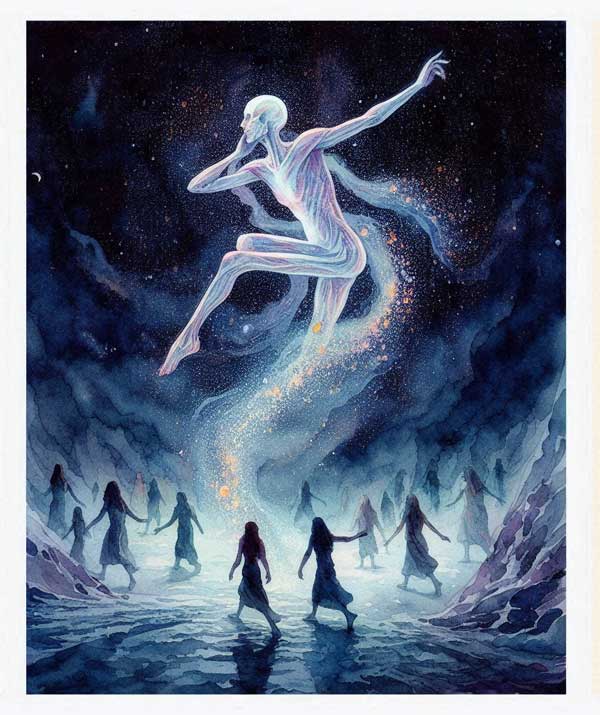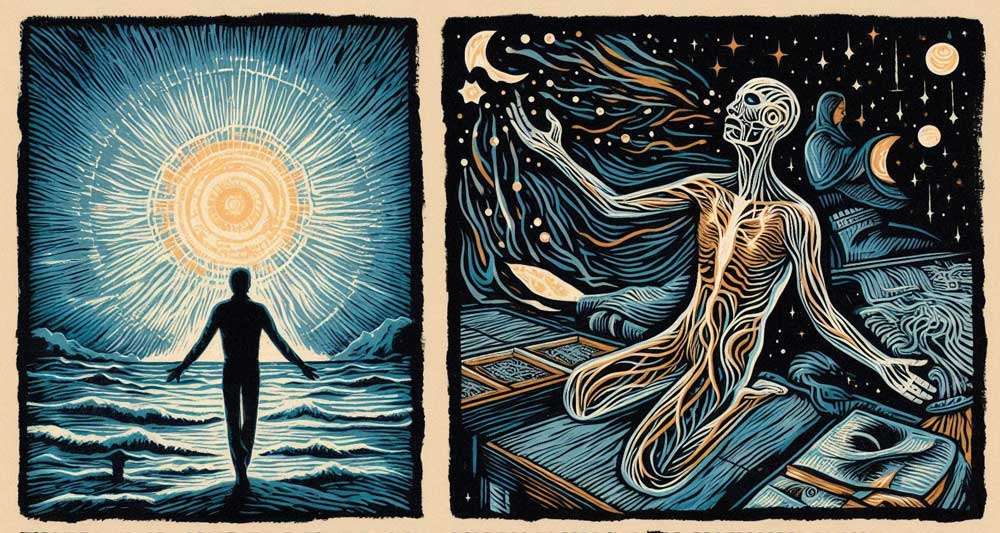
There is an undercurrent of longing within the human soul—a desire to transcend the limitations of flesh and bone, to cross the invisible thresholds between worlds, and to glimpse the infinite. In both the haunting narrative of Netflix’s The OA and the teachings of the enigmatic Carlos Castaneda, this very yearning takes form, dancing through the language of the body, manifesting through movement, breath, and intention.
At first glance, The OA seems like a bizarre, fantastical sci-fi tale—a drama wrapped in mystery, about Prairie Johnson, a blind woman who disappears for seven years only to return, not only with her sight restored but with cryptic knowledge of other dimensions. But beneath the layers of its complex narrative, The OA is much more—a meditation on the power of movement, spirit, and transformation. It calls to mind the journey of another seeker of hidden knowledge: Carlos Castaneda, whose life work aimed to unveil the mysteries of consciousness and the pathways to alternate realities.
Movement as Portal to the Infinite
For both Prairie and Castaneda, movement is more than a physical act. It is a gateway—an alchemical process that can elevate the individual beyond the material world, into realms unseen. Prairie, in The OA, learns a set of “movements”—fluid, choreographed gestures that, when performed with absolute focus and intention, unlock the doors to parallel dimensions. These movements are far more than simple expressions of the body—they are keys that open the fabric of reality, that transcend the known and venture into the unknown.
In Carlos Castaneda’s universe, the “magical passes” serve a similar purpose. Castaneda, under the tutelage of his teacher Don Juan, learns that physical postures and movements, when performed with precision and discipline, can alter one’s perception and align the practitioner with energetic flows that exist beyond the mundane world. “We are perceivers,” Don Juan tells Castaneda. “The world that we perceive, though, is an illusion. It was created by a description that was told to us since the moment we were born.” (Journey to Ixtlan). These magical passes are a means of breaking the illusions that tether us to a narrow reality. When executed with awareness, they serve as tools to open the perception to “non-ordinary reality.”
In both cases, the body becomes a tool for transformation. The arms, legs, and breath move in concert with the deepest desires of the spirit, and in this union, something miraculous occurs: the boundaries between worlds begin to dissolve.
The Breath of Life and Death

A common thread between The OA and Castaneda’s magical teachings is the close relationship between life, death, and transformation. Prairie’s movements are inseparable from the idea of resurrection and rebirth—of dying in one world and emerging in another. As she and the others perform the movements, they brush against the veils of life and death, and with each breath, they step closer to the edge of the infinite. In one poignant moment, Prairie reveals, “It’s not dying that’s the problem. It’s dying without having ever lived.”
In Castaneda’s world, too, death is ever-present, not as a grim fate but as an advisor—a companion that shadows the warrior on the path to freedom. “Death is the only wise advisor that we have,” Don Juan teaches. “Whenever you feel, as you always do, that everything is going wrong and you’re about to be annihilated, turn to your death and ask if that is so. Your death will tell you that you’re wrong; that nothing really matters outside its touch.” (Journey to Ixtlan). The magical passes are a means of preparing the body and spirit for this encounter, to become a “man of knowledge” who moves fluidly between life and death. For Castaneda, as for Prairie, death is not a termination but a transition—a movement between realms that is as natural as breathing.
Dimensions of Being: Unseen Realities
Both The OA and Castaneda invite us to consider the nature of reality itself. Is the world we inhabit the only one? Or are there infinite dimensions, stacked atop one another like pages in a book, waiting to be discovered? In The OA, this question is literal. Prairie speaks of other dimensions where versions of ourselves exist in parallel, each shaped by different choices, different circumstances. By performing the movements, she and her companions are able to traverse these worlds, bending space and time.
Castaneda, too, wrestles with this question throughout his journey. Through his practice of magical passes, he comes to believe that the everyday world is merely one layer of reality—that there are other planes of existence, hidden to the untrained eye, but accessible to those who are able to shift their perception. “A warrior must learn to make every act count, since he is going to be here in this world for only a short while,” Don Juan tells Castaneda. “In fact, too short for witnessing all the marvels of it.” (The Teachings of Don Juan). These marvels, Don Juan suggests, extend beyond the visible world; they inhabit dimensions of being that can only be perceived when one surrenders the ordinary mind and opens to the extraordinary.
In this way, both The OA and Castaneda’s teachings resonate with ancient spiritual traditions from around the world—traditions that speak of multiple dimensions, of the ability to travel between them through the power of focused intent, ritual, and movement. From the shamanic practices of indigenous peoples to the mysticism of the East, this idea of traversing worlds is universal, a reminder that our understanding of reality is but a sliver of the whole.

The Heart of the Journey
Ultimately, what links The OA and Castaneda’s teachings is not just the practice of physical movements, but the deep, soulful pursuit of transformation. Both Prairie and Castaneda embark on journeys that take them to the very edge of their being, where they must confront the vastness of existence and the mysteries of the self. Their stories remind us that the path to higher consciousness is not one of intellectual reasoning alone, but of embodied action—of living the questions through the body, of walking the path, dancing the movements, and breathing life into the spaces between worlds.
In both tales, we are reminded of the power we hold within—the power to transcend, to transform, and to touch the infinite. In movement, there is magic. In breath, there is awakening. As Don Juan puts it, “We hardly ever realize that we can cut anything out of our lives, anytime, in the blink of an eye.” (Journey to Ixtlan). This simple, radical truth is echoed in The OA: that within each of us lies the potential to step beyond the known into the mystery of infinite realities, with nothing but a movement, a breath, and an unwavering intention.
In the spaces we create with our bodies and spirits, there is the possibility of worlds beyond imagining.
